lummi island wine tasting april 26-27 ’24
Hours, April 26-27 ’24
OPEN for wine tasting and sales:
Friday 4-6 pm Saturday 3-5 pm
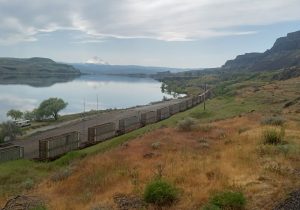
At the moment we are in our trailer at Maryhill State Park on the north shore of the Columbia River.
Over millennia the river has cut a dramatic canyon through the deep basalt built up by Cascade volcanoes. This photo is looking west toward Mt. Hood (from a winery backyard!). By our unofficial count, about 20 120-car trains go each way on each side of the Columbia every day, carrying mostly raw materials west and empty cars east.
At the same time we can look across to the Oregon side and see I-84 running along the river with a steady stream of semis carrying finished products to markets in both directions. Just above us is a steep climb from the nearby bridge to Highway 97, with the frequent sounds of big semis grinding up the half-mile grade in low gear, and the explosive sounds of air brakes on the ones coming down.
Though we have been here many times before, this is the first time we have been so consciously aware of the ongoing sounds of truck and train traffic. It doesn’t change the fact that this is a beautiful and relaxing place, a wide open piece of unique geography.
This visit does, however, strike a resonant note with my training and experience as a resource economist, my research on climate change some 40 years ago at nearby Batelle Labs in Richland, and the fact that my friend Peter just gave me a copy of the book Slow Down: the Degrowth Manifesto, by Kohei Saito. More on that below.
Friday Bread This Week
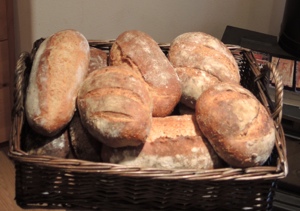
Buckwheat Rye – Fresh milled buckwheat and rye flours are soaked for several hours without any yeast in a method known as an autolyse. As buckwheat has no gluten and rye has very little, the autolyse allows the grain to start the overnight fermenting process in the refrigerator. The buckwheat-rye soaker is then mixed with bread flour, salt, yeast and a bit of honey. Goes well with all sorts of meats and cheese – $5/loaf
Whole Grain Spelt Sweet Levain – Also made with a levain of freshly milled whole wheat and whole spelt before mixing with bread flour and a nice combination of dried apricots, golden raisins, slivered almonds and both sunflower and flax seeds. Chock full of flavor!– $5/loaf
and pastry this week…
Brioche Almond Buns – Made with a delicious brioche dough full of eggs, butter and sugar. Rolled out and spread with an almond cream filling. The almond cream is not made from pre-made almond paste, but rather is a delicious creamy filling made with lots more butter, sugar and eggs as well as almond flour. Yum, yum – 2/$5
Island Bakery has developed a rotation cycle of several dozen breads and pastries. Each Sunday Janice emails the week’s bread offering to her mailing list. Orders received before 5 pm Tuesday will be available for pickup at the wine shop each Friday from 4:00 – 5:30 pm. Go to Contact us to get on the bread email list.
Economics of the Heart: Climate Change Elephants in Every Room

Slow Down, by Saitō Kōhei, is essentially a refresher course in environmental economics from the viewpoint of a Marxist economist. Lots of people outside the profession don’t know that there are a lot of different specialties in the field, and in particular that there is a bona fide group of modern day Marxist economists called the Union for Radical Political Economics. (URPE)
My experience with these people is that they are particularly bright theoreticians who have long been “onto” the duplicity of the so-called “perfectly competitive model” dating back to Adam Smith a very long time ago, and have developed their own vocabulary for analyzing its many shortcomings.
Years ago I taught a course in “Urban Economics” several times, found the subject fascinating, and learned a lot! I stumbled onto a great textbook, a collection of readings by mostly URPE neo-Marxist economists. One takeaway that has stuck with me all these years is the particular absurdity of expecting markets to sort out fair or efficient resource allocations in the close complexity of any large city…or anywhere else where the distribution of wealth (i.e.,” the ownership of income-earning assets”) is highly skewed to a uber-wealthy minority.
Back in the early fifties, Ronald Reagan hosted a weekly series of video plays called General Electric Theater with the slogan, “Progress is our most important Product.” That progress has been achieved by systematically destroying the environments where these resources were extracted and the global environment upon which the damages from both their extraction and use have fallen.
Since 1980 and Reagan’s deliberate policies of lowering taxes for the rich while reducing assistance for the poor, the crazy, the disabled, and the sick became bedrock of Republican Policy, more guard rails have fallen off in many directions. In particular, under the auspices of “free market forces,” fossil fuel consumption since 1950 has risen 7-fold, from 20,000 terrawatt-hrs to 140,000 TWH. And that is where the carbon that is killing our planet is coming from: a bunch of rich guys in suits sitting around a table willing to destroy all life on Earth for a few more years of personal wealth and power.
The essence of URPE thinking is that there is no such thing as a “perfectly competitive market” in the real world, where market power would be equally divided between producers and consumers. Rather,Kōhei‘s view is that under capitalism the owners of the means of production collect $ every time anyone passes “Go,” while workers only get paid for a day’s labor, and non-pecuniary external costs are exported to the environment rather than mitigated by moderation and due responsibility. These outcomes are the predictable outcomes of unregulated capitalism.
Adam Smith is considered the founder of market economics, in which the Invisible Hand of self-interest “leads everyone to promote the overall good of the society more effectually than when by direct attention.”
But Marx considered that capitalism, i.e., ownership of the means of production by an elite few, would serve only the needs of its owners while at best keeping everyone else at basic subsistence levels, and at worst condemning them to lives of poverty and misery.
to be continued
lummi island wine tasting april 19-20 ’24
Hours, April 5-6 ’24
Friday 4-6 pm Saturday 3-5 pm
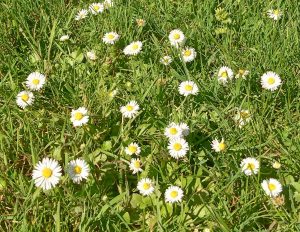
daisies at Bayview
This week’s wine tasting
Juggernaut Chardonnay ’21 Sonoma $17
Aromas of apple, Asian pear and lemon meringue open to rich and lingering flavors of stone fruit, honeysuckle, and yellow plum, and barrel fermentation finishes with notes of vanilla, butter cream and hints of clove.
Marietta Old Vine Red ’22 California
Zinfandel blend from Geyserville with lovely bright plum fruit, dark and focused notes of briar and black tea, with balanced flavor, medium body, and easy mouth of sweet spice and velvety tannins; you will want more!
Bold Wine Cabernet ’21 $26 Paso Robles
Co-fermented cab-malbec-petit verdot; carefully hand-harvested, sorted, and destemmed, 6-day cold-soaked, and native yeast fermented in stainless, followed by extended maceration for big flavors & lingering palate.
Friday Bread This Week

Rosemary Olive Oil – Made with bread flour and freshly milled white whole wheat for additional flavor and texture. Fresh rosemary from the garden and olive oil to make for a nice tender crumb and a nice crisp crust. A great all around bread – $5/loaf
Sesame Semolina – this bread uses a sponge as a pre-ferment that ferments some of the flour, water & yeast before mixing the final dough. Made with semolina and bread flour as well as a soaker of cornmeal, millet and sesame seeds, a little olive oil rounds out the flavor and tenderizes the crumb. The finished dough is rolled in more sesame seeds before baking. A bread with a lot of great flavors. $5/loaf
Kouign Aman – Made with the same traditional laminated french pastry used for croissants for both a little sourdough flavor and build strength…hen rolling out however, instead of using flour to prevent sticking, sugar is used. The dough is cut into squares, placed in cupcake tins then filled with a cream cheese filling…sort of “ a cheese Danish and a Croissant walk into a bar…”– 2/$5
Island Bakery has developed a rotation cycle of several dozen breads and pastries. Each Sunday Janice emails the week’s bread offering to her mailing list. Orders received before 5 pm Tuesday will be available for pickup at the wine shop each Friday from 4:00 – 5:30 pm. Go to Contact us to get on the bread email list.
Economics of the Heart: Freedom and Constraint

“WILLIAM F. BUCKLEY JR.” by quotableright is licensed under CC BY-SA 2.0.
Eisenhower was the President we old-timers grew up with, and to us kids the fifties felt pretty stable, peaceful, and “safe.” Despite nagging concerns about surprise nuclear attacks from the Russians, the “duck and cover” drills in school, and the little pamphlets to help us differentiate the silhouettes of Russian bombers from our own, we were imbued with the notion that we were the Good Guys, and “they” were the Bad Guys.
That bubble burst when JFK was murdered in 1963, and there is considerable reason to suspect it –and perhaps Bobby’s– assassinations were in retaliation for their ending the long history of racial segregation in the South.
LBJ then famously ushered in his own kind of New Deal at the same time as he escalated our involvement in Vietnam. (I remember marching past his smiles and waves as our contingent of midshipmen marched past his reviewing stand at his Inaugural Parade; and I also remember the bleak devastation along the Mekong when our ship went up it in ’68. Complicated stuff.)
Nixon managed to do a number of good things and not-so-good things. (I remember a fleeting hand squeeze and smile when Air Force 1 landed briefly at NAS Quonset Pt RI where I was stationed. He had promised to End the War and didn’t.)
That reminds me that I had a close friend at that time who was a Big Fan of William Buckley, and we had some spirited discussions watching his show, Firing Line. While Buckley’s personality was pompous and irritating, he was entertaining in his way. He is mentioned here because his views marked a particular point in the development of American Conservative values and thought, combining elements of libertarianism, anticommunism, and Catholic traditionalism.
Today’s conservative values are shadow silhouettes of those days. We can start to recognize a certain cognitive dissonance between what our legitimate news outlets tell us abut our reality and how well-funded, politically motivated “information manipulators” reframe it for particular political ends. Libertarians and anticommunists have far more in common with today’s Democrats, and even a lot of Catholic women these days are not happy with the war on women’s rights.
Our current national polities highlight the downward spiral of our “little-d” democratic values over the past four decades. As often noted in these posts, this deliberate undermining of democratic values is a thread that runs a least back to business grievance against the New Deal.
By 1980 the those same forces had built a marriage of Birchism, Big Money, and a host of very influential “think tanks” like the Heritage Foundation, powerful enough to get Reagan into the White House, consolidate control of the Republican Party, and work toward their ultimate political goals of winning and keeping complete control of the Executive, Legislative, and Judicial arms of both the Federal government and every State government. They have been very ambitious, well-funded, and ruthless. And, unfortunately for all living things, very successful.
The central question of our times is, as Butch and Sundance kept wondering, “Who ARE those guys?”
At present we can infer that they are big enough, wealthy enough, powerful enough, apolitical enough, self-centered enough, and ruthless enough for us to infer that their mission:
- has a lot more to do with money and power than with religion;
- is funded by a significant number of billionaires and corporations across the globe;
- is politically and financially linked across nations and industries;
- aims to achieve global, political, economic, and financial dominance by a small planetary elite;
- sees climate change as both a reason and an opportunity to eliminate poverty and dissidence by eliminating a large percentage of humanity. It’s just business.
The Tweetster is a decoy, a dry run, a preliminary experiment. And totally expendable. They have planned for scenarios where he runs and wins and is again their puppet (even if he doesn’t know it), ones where loses or goes to jail (yes, there is likely a detailed contingency plan for the next coup), and every other scenario imaginable.
So: the Tweetster has only ever been right about one thing: we better fight like hell or we won’t have a country any more.
lummi island wine tasting april 12-13 ’24
Hours, April 12-13 ’24
Friday 4-6 pm Saturday 3-5 pm
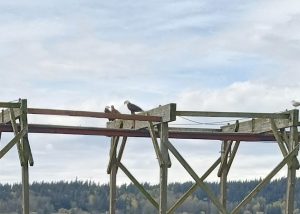 mama and maturing eaglets
mama and maturing eaglets
This week’s wine tasting
Juggernaut Sauvignon Blanc $17 New Zealand $17
Marlborough’s Wairau Valley has a global reputation for its bright, vibrant acidity and aromas of fresh-cut grass and
gooseberry and citric notes of zesty grapefruit, lemon, and passion fruit that carry through the elegant finish.
Masseria del Feudo Nero d’Avola Sicilia ’21 Italy $19
Cherry, plum, vanilla and toast highlight a smooth, well-balanced wine with easy flavor, soft tannins, and silky consistency, pairing beautifully with stewed meats or pork dishes, (or pretty much anything edible!)
Alexander Valley Vineyards Zinfandel ’19 California $19
Dark purple/red hue; spicy, earthy aromas of black cherry, pepper, plum, raspberry and citrus; rich earthy flavors of cherry, plum, boysenberry, black pepper, cranberry, apricot and a hint of chocolate…everything a California zin is supposed to be.
Friday Bread This Week

Poolish Ale – the preferment here is a poolish, made with bread flour, a bit of yeast and a nice ale beer for the liquid and fermented overnight. Mixed the next day with bread flour and fresh milled whole wheat. This makes a great all around bread with a nice crisp crust – $5/loaf
Buckwheat Walnut & Honey – also made with a poolish of fresh milled buckwheat and bread flours. Buckwheat is not a grain it is actually a seed and closer in the plant family to rhubarb and sorrel than to wheat and contains no gluten– (**note: contains wheat flour so NOT gluten free). Buckwheat has an earthy/nutty flavor, a little honey and toasted walnuts. – $5/loaf
and pastry this week…
Chocolate Muffins – Rich and delicious, great chocolate flavor, and a seductively moist texture: flour, brown sugar, sour cream, and eggs, with lotsa chocolate chips inside and sprinkled on top–2/$5
Island Bakery has developed a rotation cycle of several dozen breads and pastries. Each Sunday Janice emails the week’s bread offering to her mailing list. Orders received before 5 pm Tuesday will be available for pickup at the wine shop each Friday from 4:00 – 5:30 pm. Go to Contact us to get on the bread email list.
Wine of the Week: Alexander Valley Vineyards Zinfandel
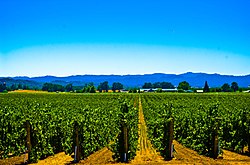
https://en.wikipedia.org/wiki/Alexander_Valley_AVA
Alexander Valley is a lovely wine region north of Santa Rosa and Napa Valley. Is is also the largest and most fully planted wine region in Sonoma County. Its many vineyards have a long-established reputation for high quality cab and merlot, which consistently deliver great flavor and texture from the alluvial soils and the hot days and cool nights that bless the entire Sonoma region. Zinfandel and Chardonnay also thrive in the region.
It is also a beautiful place just to drive through, soothed by its lush, intensely green and voluptuous vineyards. This area, east of Healdsburg and the Russian River which flows through the Valley, always seems many miles away from the hubbub of traffic just a few miles to the west.
But of course everyone already knows that vineyards themselves are soothing. Maybe it’s the constant care that keeps them healthy and thriving. Do vineyards just happen to be in beautiful places, or is it the vineyards that make these places beautiful…?
Economics of the Heart: Women to the Rescue

pink hats from the 2017 Inauguration protests
A recurring theme in this blog has been the inseparable relationship between values and facts. It’s not just that we like or prefer certain things. it’s that we make meaning from our experience based on our values, both consciously and unconsciously. Some people come into the wine shop and say “I don’t like chardonnay,” or “Red wines give me a headache.” Others might say, “I’m here to taste, whatcha pouring today?”
We all operate in a decision framework of our own personal construction, built from our experiences and the meanings we have made from them. We take it for granted that our beliefs about wine and art and beauty and politics are rational, consistent, and correct. Therefore it is not surprising that our personal values are not universal. Ten of us can share an experience and we can all make different meanings from it based on our unconscious values. This is why we have political divisions. I value a healthy planet. You prefer more $ in your pocket.
Nowhere is this more apparent than in today’s politics. It is no longer a simple ritual of “my idea is better than your idea (nyah nyah nyah nyah nyah) followed by negotiation, discussion, listening, learning, and compromising. Since about 1988, American politics has been turned into an ongoing war between our two dominant political parties, and compromise has become not only vanishingly rare, but also met with disdain, simian posturing, and fiddling faster and louder as the flames get higher and hotter.
Everybody knows at some level that this crap has to stop. The world is teetering on the abyss of an Earth-swallowing whirlpool of human making, and the brats who have taken over the toy box have climbed up into their little clubhouse to dance their little “victory” in stopping the business of government in its tracks. Meanwhile, the world teeters between the accelerating climate crisis and the growing menace of authoritarian rule everywhere, including here. As everybody knows.
At the moment there seems to be only one brightening ray of hope for pulling our country, our planet, and our world out of this global death spiral: Our Women!
There are a lot of moving parts in this picture, but the one force that has been gaining some traction in opposition to this authoritarian implosion is the rebellion against forced birth triggered by the red-state-forced-birth bandwagon. Numerous states have already passed legislation to restore every woman’s right to choose, and others will follow.
Picture OBI-WAN Kenobi saying: “Help us, Princess Leia…you’re our only Hope!”
1
lummi island wine tasting april 5-6 ’24
Hours, April 5-6 ’24
Friday 4-6 pm Saturday 3-5 pm
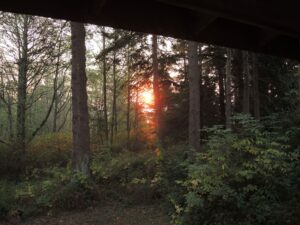
a sunrise we can actually see…!
This week’s wine tasting
MAN Chenin Blanc ’21 South Africa $11
Using only free-run juice preserves a clean, natural character, refreshing acidity, light, bright flavors of quince, pear, and pineapple, with palate of fresh stonefruit and apple, refreshing acidity & minerality, and a round, soothing mouthfeel.
Sanguineti Morellino de Scansano ’21 Italy $14
Soil of river stones, quartz, sea shells; flavors of sun-ripened, slightly smoky fruit, fresh cracked pepper, sage, and ocean brine; taut structure and a long, slightly smoky finish.
Garzon Petit Clos Marselan ’19 Uruguay
Intense red color with carmine reflections; elegant nose of red and black fruits with finish of eucalyptus and mint; Palate of integrated tannins, mineral and subtly saline notes that reflect its exceptional terroir.
Friday Bread This Week

Rosemary Olive Oil – Made with bread flour and freshly milled white whole wheat for additional flavor and texture. Fresh rosemary from the garden and olive oil to make for a nice tender crumb and a nice crisp crust. A great all around bread – $5/loaf
Multi Grain- – Uses a preferment of a portion of the flour, water, salt & yeast, mixed and fermented overnight before mixing the final dough. This allows a portion of the dough to begin the enzymatic activity and gluten development overnight in a cool environment. The next day it is mixed with bread flour and fresh milled whole wheat and rye, then some oatmeal, flax, sunflower and sesame seeds are added for a nice bit of crunch and some extra flavor. – $5/loaf
Island Bakery has developed a rotation cycle of several dozen breads and pastries. Each Sunday Janice emails the week’s bread offering to her mailing list. Orders received before 5 pm Tuesday will be available for pickup at the wine shop each Friday from 4:00 – 5:30 pm. Go to Contact us to get on the bread email list.
Wine of the Week: Garzon Petit Clos Marselan ’19 Uruguay $17
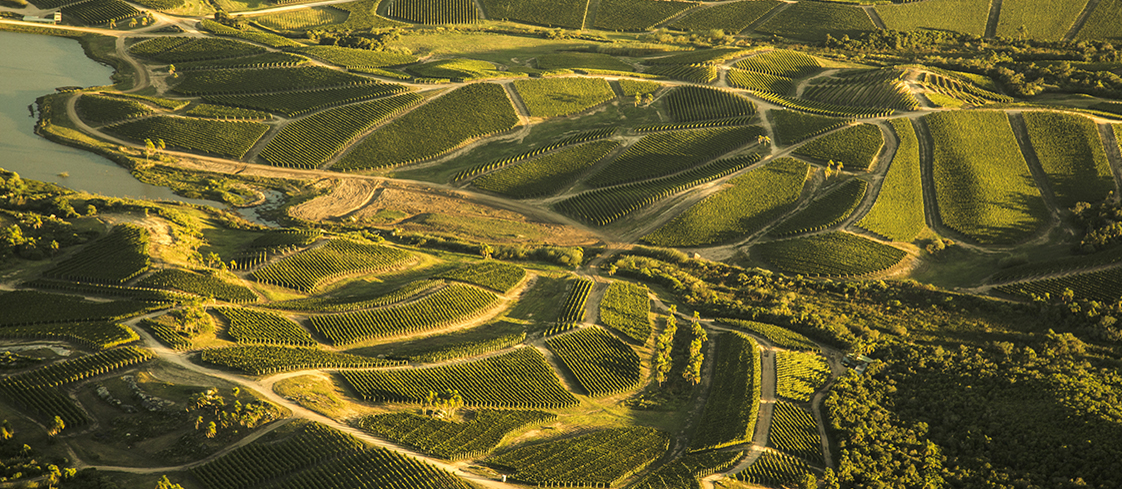
At the southern-most point on the Uruguayan Atlantic coast and 160 meters above sea level, these Marselan vines were planted in a unique geographical landscape with a temperate climate. Using organic farming practices allows each vineyard to reflect the authentic personality of its unique location.
Geology in coastal Uruguay belongs to what is known as Crystalline Basement, the oldest soils on the planet, over 2 billion years old. Over millennia these rocks are altered and broken down by geological forces,developing a fantastic soil of weathered rock called Ballast.
Since all the wines we have tasted from this winery have substantially over-delivered for their modest prices, we are persuaded that there is indeed something special going on in these vines’ local geology, geography, and climate…you know, the terroir…that is very wine-friendly!
As for Marselan, it was created in 1961 as a cross between Bordeaux varietal cab sauv and Rhone varietal grenache. Because of its small grape sizes, it was not grown for some years, until, because of its resistance to many vine disease organisms, it found homes in a few vineyards in France, California, and Uruguay.
Economics of the Heart: Time for a Course Change
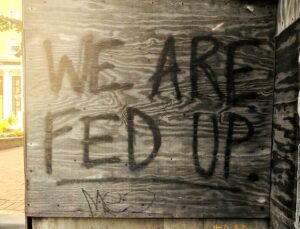
creative commons
“All I know about magnets is this, give me a glass of water, let me drop it on the magnets, that’s the end of the magnets.”
“I had some beautiful pictures taken in which I had a big smile on my face. I looked happy, I looked content, I looked like a very nice person, which in theory I am.”
“Right now, a number of state laws allow a baby to be born from his or her mother’s womb in the ninth month. It is wrong. It has to change.”
“I’m the most successful person ever to run for the presidency, by far. Nobody’s ever been more successful than me. I’m the most successful person ever to run. Ross Perot isn’t successful like me. Romney – I have a Gucci store that’s worth more than Romney.”
“Sorry losers and haters, but my IQ is one of the highest – and you all know it! Please don’t feel so stupid or insecure, it’s not your fault.”
“I see the disinfectant that knocks it out in a minute, one minute; is there a way we can do something like that by injection inside…?”
“We have Stealth bombers that are completely invisible. You can be standing right next to one, and you can’t see it at all.”
“You know what uranium is, right? It’s this thing called nuclear weapons, and other things; like lots of things are done with uranium, including bad things.”
“Canadians are smuggling things back into Canada because the tariffs are so massive…so high that they have to smuggle them in. They buy shoes, then they wear them. They scuff them up. They make them sound old or look old.”
“A virus like the Corona virus hasn’t been seen since the 1917 flu that ended WWII.”
“In June of 1775, the Continental Congress created a unified army out of the revolutionary forces encamped around Boston and New York and named it after the great George Washington, commander-in-chief. Our army manned the air. It rammed the ramparts. It took over the airports. It did everything it had to do. And at Fort McHenry, under the rockets’ red glare, it had nothing but victory. And when dawn came, their star-spangled banner waved defiant.”
“26,000 unreported sexual assaults in the military-only 238 convictions. What did these geniuses expect when they put men & women together?”
“All of the women on ‘The Apprentice’ flirted with me- consciously or unconsciously. That’s to be expected.”
“I think I am actually humble. I think I am much more humble than you would understand.”
“Pence did something wrong. He should have put the votes back to the state legislatures. I think we would have had a different outcome, I really do.”
“When you’re a star, they let you do it. You can do anything. … Grab ’em by the pussy, you can do anything.”
to Zelensky: “There’s a lot of talk about Biden’s son, that Biden stopped the prosecution and a lot of people want to find out about that so whatever you can do with the Attorney General would be great. She (US ambassador Yovanovitch) is going to go through some things. I will have Mr. Giuliani give you a call and I am also going to have Attorney General Barr call and we will get to the bottom of it.”
- “I cannot tell a lie.” -George Washington
- “I cannot tell the truth.” -Donald Trump
- “I cannot tell the difference.” -Trump voter

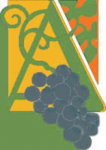 2072 Granger Way
2072 Granger Way